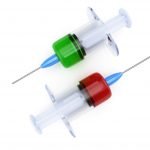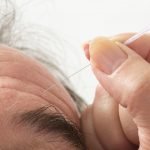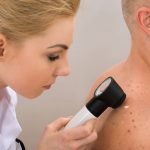Ludwig Staden: GI Hydropathic & Naturopathic Advice
Sussanna Czeranko, ND, BBE
Nature Cure Clinical Pearls
There is no better method to cure internal piles [hemorrhoids] than the Kneipp Cure. – Ludwig Staden, 1900, p.127
We never recommend cold water applications longer than one to three minutes; the fundamental rule of the Kneipp Cure is: “The colder the water, the shorter must be the application,” only then can a good reaction take place. – Ludwig Staden, 1901, p.60
Every morning a cool sponge bath, and every night a wet abdominal bandage. [Advice given to someone with chronic catarrh of the stomach] – Ludwig Staden, 1901, p.145
Last month we were introduced to Ludwig Staden’s column, “Hydropathic Medical Adviser,” published throughout 1900 in The Kneipp Water Cure Monthly. Staden’s column informed Americans about how hydrotherapies could help in a host of ailments. The therapies that Staden suggested were easily self-administered and were virtually free of costs, other than time. Now that we have reviewed respiratory ailments, let us continue examining other ailments that interested those who sent in requests to Staden. I have chosen 5 conditions, and they will indeed be of interest, since they are all prevalent today, 116 years later.
Two Cases of Hemorrhoids
Let’s begin with the topic of hemorrhoids, or piles. Two cases will be presented. The first case was submitted by Wm. N. of New Haven, CT. Staden advised that this patient’s treatment begin with a whole-body sponge bath every morning, immediately upon rising. The sponge bath was followed by friction or rubbing with the bare hands. We saw in the previous cases of the respiratory diseases that Staden seemed to favor beginning a patient’s day with the cold sponge bath.
The next suggestion was a daily cold sitz bath with a duration of 30 seconds, to be taken for 3 to 4 weeks. Staden recommended a wide range of temperatures be used, eg, “a cold bath may be from 33° to 70° F/0.6° to 21° C” (Lust, 1901, p.241), and it was often adjusted to the patient’s strength and constitution. Then the sitz baths were reduced to 1 every other day. Three water applications were prescribed twice a week: the short bandage, the knee gush, and the upper gush. A water application that aided the evacuation of dissolved morbid matter was the abdominal bandage, which was applied at night. The cold packs of bandages were “intended to prevent the excessive or irregular flow of blood to any one part, and to lead off the heat.” (Lust, 1903, p.317) If constipation was a problem, Staden recommended an enema of weak oak bark tea mixed with 1 teaspoon of lemon juice, comprising 1 quart fluid at a temperature of 90° F/32° C. He prescribed a strict vegetarian diet of 2 meals per day and plenty of air, especially at night when sleeping. (Staden, 1900, p.31)
There is nothing in Staden’s prescription that is prohibitive. The sitz baths are easy to do, requiring a large tub, and are extremely efficient in terms of time. The short bandage is also quite simple. Kneipp used a coarse linen sheet and even created a cottage industry to meet the demand for the specialized linen mesh used for his compresses. If linen was not available, a cotton sheet was suggested as a good substitute. A piece of material was required as well, wide enough that it covered the torso and reached from the axillae to the knees. It was to be wrapped around the body several times after first being dipped into cold water and thoroughly wrung out. Staden added, “A woolen blanket is put over the wet linen [or sheet] and the patient is covered with enough blankets to produce natural heat.” (Lust, 1900, p.20) Staden also recommended, “The short [bandage] has to last from one to two hours.” (Lust, 1900, p.20)
In the second case of hemorrhoids, Rev B., of Toledo, was prescribed alternate warm and cold sitz baths twice a week. Recall that Staden prescribed only cold sitz baths for Wm. N. The warm sitz bath – made with an oak bark decoction – was at 100° F/38° C and was followed with a cold sitz bath for 30 seconds. The other recommendations given to Wm. N. were also given to Rev B., though with minor changes. What remained the same was twice weekly short wraps, and knee and upper gushes, which were advised along with the nightly abdominal compress. The enema had some modifications: ¾ quart (95° F/35° C) of oak bark tea was used, which was followed by a small cold injection of water (volume 1/2 wine glass) that was to remain in the rectum. One cup of buckthorn tea was to be consumed every day, along with a diet rich in fruit, whole wheat bread, and malt coffee. (Staden, 1900, p.127)
Weak Stomach
In the case of W & C, of Charleston, SC, who both suffered from weak stomach, Staden’s emphasis was on dietary changes. He listed foods and beverages that they must avoid, such as “all meat and meat soups, beef extracts, beer, wine, whiskey, coffee, tea, vinegar, cheese, spices, except a little salt, pies, and candies.” (Staden, 1900, p.145) They were allowed to eat 2 meals per day, consisting of “all the green and root vegetables (except cabbage) if they are prepared by steaming and no water which contains the vegetable salts and acid (Nachrsalze) has to be thrown away; further all kinds of cereals and light flour dishes, the crown of all food for you, is a regular fruit diet, especially grapes, apples, oranges, pineapples, berries combined with whole wheat bread and milk.” (Staden, 1900, p.145) Sour milk with Zwieback whole wheat was also recommended for dyspepsia.
Prescribed hydrotherapies included a morning cold sponge bath and an abdominal compress at night. Three times a week the thigh gush and the upper gush were advised, and twice a week the short bandage. If constipation occurred, a weak peppermint tea was used in an enema along with a cup of buckthorn tea. W & C spent time at the ocean, and Staden encouraged them to continue surfing in the water and to “take a good sun bath before going in the water and a hot sand bath after the bath.” (Staden, 1900, p.145)
Dyspepsia
B. I. B. of Rockford, IL, wrote about concerns of dyspepsia, and Staden quickly dispelled worries of cancer or ulcers. Instead, he directed this person to focus on diet. The integrative approach trusted by early naturopaths included dietetics and herbal teas along with hydrotherapy – an approach well illustrated by this comment by Staden: “The most important thing is a very careful diet, which you did not observe till now; water treatments alone are not sufficient.” (Staden, 1900, p.165) His list of foods to avoid included “all kinds of meat and fish, all beverages which contain alcohol; also patent medicines, coffee and tea, vinegar, spices, cheese except unsalted fresh pot cheese, white bread, candies, pies, etc., and [to] live mostly on vegetables, cereals, whole wheat bread, toasts, Zwieback, milk, if possible direct from the cow, and dry rolls.” (Staden, 1900, p.165) He also included 1 teaspoon of lemon juice, morning, noon, and before bed. Staden emphasized that the simpler the diet, the better.
The water application that Staden predictably advised every morning was the cold sponge bath. Then, “twice weekly a short wrap or three-quarter pack, one hour duration with sitz bath, 80° F/27° C five to ten minutes to follow; every other evening an alternate foot bath five minutes warm and a half a minute cold, three times repeated, and every night wet stomach bandage.” (Staden, 1900, p.165) He also recommended air and sun baths for 10 to 20 minutes in the morning. If constipation ever became a problem, he counseled the patient to drink a cup of buckthorn tea and to have an enema using 1 to 1 ½ quarts of water at 95° F/35° C.
Staden’s nutritional and herbal counsel is definitely sound and consistent with what we would advise a patient with digestive problems. However, his inclusion of hydrotherapy, specifically of daily baths and abdominal compresses, with the less frequent use of foot baths and wraps, reminds us of where Naturopathy came from.
Heavy Case of Constipation
Emma L. D., of Wunsocket, RI, wrote to Staden about a problem he described as “a very heavy case of constipation.” (Staden, 1900, p.187) The woman was eating a fruit diet, which Staden encouraged her to continue. The hydrotherapies that he proposed included a morning cold sponge bath followed by a vigorous rub all over the body. Next, he advised a warm enema, using 1-3 quarts of water until an evacuation, which was then to be followed by a cold small enema that was to remain in the bowels. Every night a wet stomach bandage was to be applied. Staden also prescribed a twice weekly hot sitz bath of 98° F/36.7° C for 25 minutes, which was then to be followed by a cold wash and – every other day – a cold half-bath. A cup of buckthorn tea was to be drunk every evening, and Staden reminded the patient to ensure that this herbal decoction was cooked for 25 minutes. (Staden, 1900, p.187)
1901, Naturopathic Adviser
Staden continued his column of answering letters sent to The Kneipp Water Cure Monthly. However, instead of it being called “Hydropathic Medical Adviser,” the column’s title was changed in 1901 to “Naturopathic Adviser.” In a previous article, “Surprise, Surprise,” we learned that Lust had used the designation of “naturopathic physician” for the first time in print in the December 1900 issue of The Kneipp Water Cure Monthly. (Czeranko, 2016, p.24) The new column, “Naturopathic Advisor,” was a natural progression for Lust to adopt a wider reach for natural therapies that continues to include hydrotherapy. What is noticeable about the “Naturopathic Advisor” is that Staden’s responses are now longer and more detailed. Instead of being given one-quarter or one-third of a page for his column, Staden is now getting the minimum of a half-page. By June 1901, a notice appeared with the “Naturopathic Advisor” column, which stated, “Patients who desire advice by mail have to send $2 in advance for first letter, $1 for any additional advice. Otherwise, no answer in future.” (Staden, 1901, p.170) No doubt the demand for free personal advice exceeded the expectations and ability to answer every letter.
In his new column, Staden continues to sign his name Ludwig Staden, Naturarzt, and by the November issue, he replaces the German Naturarzt to “Naturopath.” The complete conversion to a new identity came in the January 1902 issue of The Naturopath and Herald of Health, which permanently replaced The Kneipp Water Cure Monthly.
Chronic Indigestion
In the February 1901 issue, Michael M., of Flagstaff, AZ, wrote for help with his chronic indigestion and stiff elbow. Staden begins by advising the patient to undertake first thing in the morning “a good rubbing of the whole body with a wet towel until warm all over, then dress without drying off and take some outdoor exercise.” (Staden, 1901, p.60) The daily cold sponge bath was replaced by “every other day a sitz bath, 85° F/29° C 10 to 15 minutes with pouring water on the stomach.” (Staden, 1901, p.60) Once a week, a full pack or a bed steam bath for 1 hour was to be followed by a cold sponge bath. What remained the same was the evening abdominal compress.
Staden also suggested an evening enema or injection that used 1 to 2 quarts of peppermint tea mixed with 2 tablespoons of lemon juice to 1 quart. Each consecutive night, the herbal tea that was used for the enema was to be changed. “The first day peppermint tea, second chicory, third gentian, fourth dandelion, fifth ribwort [Plantago lanceolata], sixth rue, seventh hen’s feet [Caucalis daucoides], then begin again with peppermint.” (Staden, 1901, p.60) For the stiff elbow, a nightly clay compress; during the day, the wet clay compress was to be applied and renewed as soon as the clay dried.
On the diet front, Staden gave a detailed account of the vegetarian diet for this person. It included a long list of allowed vegetables, fruits, and grains, along with some tips for sourcing some of the items.
Closing Comments
For digestive complaints, Staden consistently prescribed a morning cold sponge bath or friction rub and an evening abdominal compress. The individualized treatments proposed included many different water applications, with modifications for each person. As Benedict Lust changed the title of his columns and his publications, we can see that hydrotherapies, diet, and herbs were the foundational therapies for the early naturopaths. In the 1901 column, “Naturopathic Advisor,” dietetics and herbs become more integral to the treatment plan. Yet, hydrotherapy was unwavering as the core intervention for each patient. What stands clear as day, the consistent use of hydropathy by the early naturopaths gave them an understanding that we have lost.
In the next issue, we will continue with Staden’s recommendations to women for several gynecological conditions.
References:
Czeranko, S. (2016). Surprise, surprise, Naturopathic Doctor News & Review, 12 (9), 23-24.
Lust, B. (1900). The short package according to Kneipp. The Kneipp Water Cure Monthly, I (2), 20.
Lust, B. (1901). Baths and the water cure. The Kneipp Water Cure Monthly, II (9), 241.
Lust, B. (1903). The means of hardening for children and adults. The Naturopath and Herald of Health, IV (11), 313-322.
Staden, L. (1900). Hydropathic medical adviser. The Kneipp Water Cure Monthly, I (2), 31.
Staden, L. (1900). Hydropathic medical adviser. The Kneipp Water Cure Monthly, I (7), 127.
Staden, L. (1900). Hydropathic medical adviser. The Kneipp Water Cure Monthly, I (8), 145.
Staden, L. (1900). Hydropathic medical adviser. The Kneipp Water Cure Monthly, I (9), 165.
Staden, L. (1900). Hydropathic medical adviser. The Kneipp Water Cure Monthly, I (10), 187.
Staden, L. (1901). Naturopathic adviser. The Kneipp Water Cure Monthly, II (2), 60.
Staden, L. (1901). Naturopathic adviser. The Kneipp Water Cure Monthly, II (5), 145.
Staden, L. (1901). Naturopathic adviser. The Kneipp Water Cure Monthly, II (6), 170.
 Sussanna Czeranko, ND, BBE, a graduate of CCNM, is a licensed ND in Oregon. Sussanna is a frequent presenter, nationally and internationally. As Curator of the Rare Books Collection at NUNM, she is the author of The Hevert Collection, a 12-book series about naturopathic medicine, the ninth volume of which is now complete, Mental Culture in Naturopathic Medicine. Sussanna founded The Breathing Academy, a training institute for naturopathic doctors to incorporate a scientific model of breathing therapy called Buteyko into their practice. Her next large project is to complete the development of her new medical spa in Manitou Beach, Saskatchewan – Manitou Waters Centre. She is the co-founder of the International Congress on Naturopathic Medicine and the inaugural conference chair of the Healing Skies Naturopathic Medicine Conference, in Saskatchewan.
Sussanna Czeranko, ND, BBE, a graduate of CCNM, is a licensed ND in Oregon. Sussanna is a frequent presenter, nationally and internationally. As Curator of the Rare Books Collection at NUNM, she is the author of The Hevert Collection, a 12-book series about naturopathic medicine, the ninth volume of which is now complete, Mental Culture in Naturopathic Medicine. Sussanna founded The Breathing Academy, a training institute for naturopathic doctors to incorporate a scientific model of breathing therapy called Buteyko into their practice. Her next large project is to complete the development of her new medical spa in Manitou Beach, Saskatchewan – Manitou Waters Centre. She is the co-founder of the International Congress on Naturopathic Medicine and the inaugural conference chair of the Healing Skies Naturopathic Medicine Conference, in Saskatchewan.










